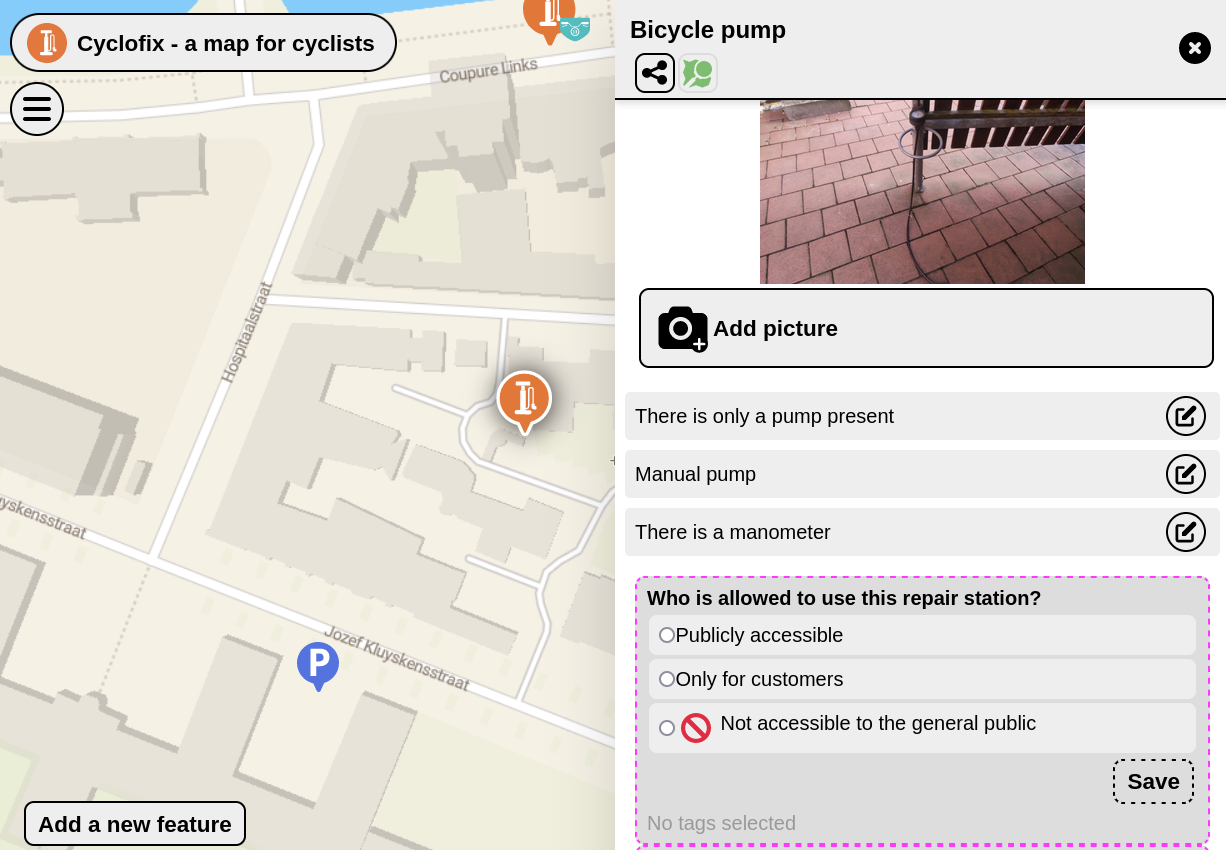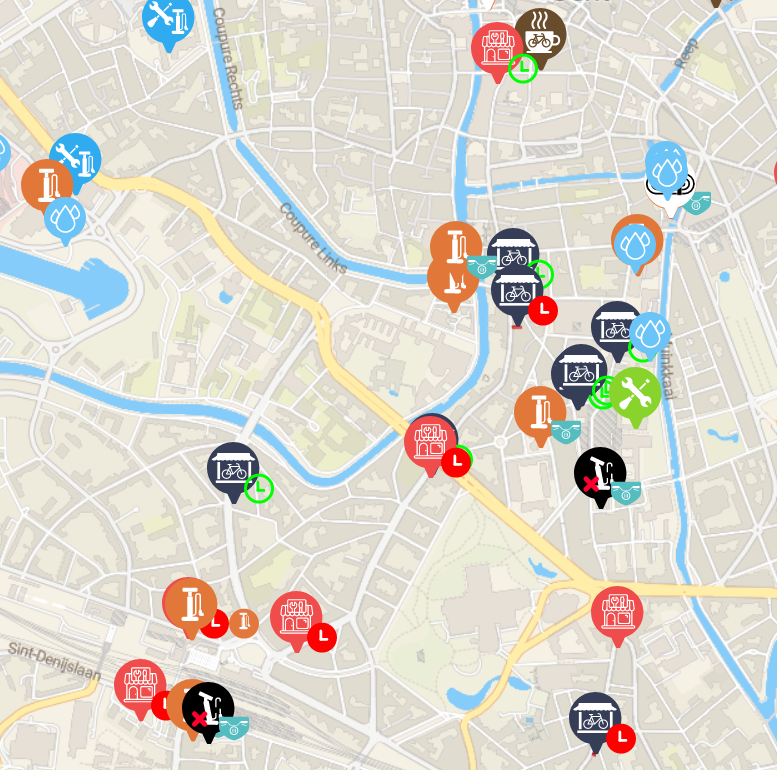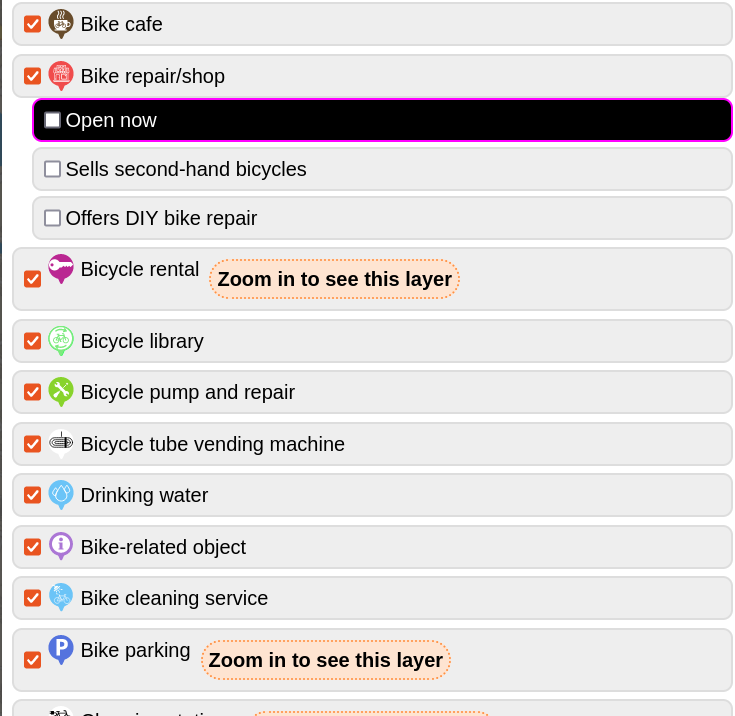4.7 KiB
Welcome to MapComplete Studio
Hi!
Welcome to MapComplete Studio.
These slides will walk you through the most important concepts to use MapComplete Studio effectively
What is OpenStreetMap?
OpenStreetMap is a worldwide, collaborative project where we map the world together.
People worldwide do add data about features around the world, such as streets, shops, toilets, infrastructure, ...
All type of objects are welcome to be added into OpenStreetMap, as long as:
- The object can be verified on the ground and is present
- The object is permanent

The following items are thus not welcome: events such as a festival, measurements of e.g. air quality or historic data are not welcome. Have a look at Sensor.Community or to OpenHistoricalMap instead.
How can OpenStreetMap data be reused?
OpenStreetMap data can be reused freely, including for commercial purposes. However, you have to:
- Give attribution
- Keep the data open - changes to data based on OpenStreetMap must be published under the same license.
You can read the full copyright notice here
This also means that we are not allowed to copy data from other maps. Do not enter data based on Google Maps!
How does OpenStreetMap organise the data?
In OpenStreetMap, the geodata can be one of three types:
- Points which have a geocoordinate
- Lines which are a list of points. Closed lines are used to represent polygons
- Relations which are a list of points, lines and/or other relations.
All of those objects have a set of attributes. These are pairs of a key and a value which tell us what a point or line does represent. For example, amenity=bench represents a sitting bench.
You can find the meaning of all those keys and values on the OpenStreetMap-wiki

OpenStreetMap does not have layers
Many traditional GIS-applications organise the data into layers.
OpenStreetMap does not do this. Consider this shop:
This place has three functions:
- It is a shop, selling boardgames
- It is a café, where one can drink a tea (while testing one of the board games)
- It is a social inclusion project for people with a mental disability
In a traditional system with layers, one would either have to choose the most fitting layer (e.g. the layer pub, shops or social facility? ) losing the multi-facetted aspect of the place.
Another approach could be to add it to all three layers, duplicating the data. However, this makes maintaining the data harder.
What is MapComplete?
MapComplete is a map viewer and editor. A contributor is presented a thematic map with features that are relevant to this topic.
These features are based on OpenStreetMap. If some data is not known, the user will be asked some questions and is invited to answer them. These answers are sent back to OpenStreetMap, updating it there.

Data can also be loaded and visualised from external sources. No changes can be made to the data in that case.
MapComplete does have layers
A layer in mapcomplete describes a single type of object, e.g. shops, toilets, benches, public bookcases.
A layer tells us:
- What features to load from OpenStreetMap - thus what attributes the displayed data should have
- (Or where to find the data if we are using an external datasource)
- How these should be displayed on the map
- What should be shown in the popup...
- ... and what questions should be asked
- How to create a new point onto the map
MapComplete does have themes
A theme is a collection of layers, with a title and a description.
For example, cyclofix has many bicycle-related layers (of which items are shown on the map) and an introduction.



Studio
In MapComplete Studio, you can create and edit layers and themes to tweak it for your needs.
As a reminder:
- OpenStreetMap is an open, geographical database which can be reused under a permissive license
- MapComplete visualises data (mostly) from OpenStreetMap and can add new points and attributes to OpenStreetMap
- MapComplete works with layers; which can be bundled into a theme
Have fun creating your custom MapComplete-map!
